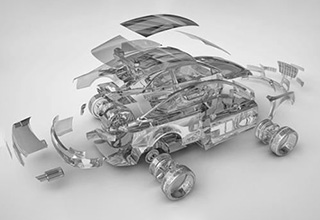When the gorgeous night scenery becomes a new business card of urban tourism, the charming landmark buildings, beautiful music fountains, and the roads full of traffic, each scenery quietly connects the chapters of a better life and a vibrant city in the light and shadow.
As a part of urban infrastructure, road lighting plays a functional role in ensuring road traffic safety and beautifying the city"s night scene. Its quality directly affects the quality of residents" night life.
Today, let"s take a look at the little knowledge about road lighting!
According to the design standard of urban road lighting, the position and traffic function of the road in the traffic network, as well as the service function for the buildings and urban residents along the line, the urban road is divided into five levels: expressway, trunk road, secondary trunk road, branch road and residential area road.
The lighting of expressway, trunk road, secondary trunk road and branch road shall meet the four evaluation indexes of average brightness (illuminance), brightness (or illuminance) uniformity, glare limitation and inducement. The residential roads mainly used for non motor vehicles and pedestrians shall meet the single evaluation index of average luminance (illuminance).
Light distribution mode
The lighting mode of roads and special places related to them can be divided into conventional lighting and high pole lighting. Among them, conventional lighting has four basic light distribution modes: unilateral arrangement, bilateral arrangement, central arrangement and transverse arrangement.
1) Unilateral arrangement
In order to ensure the effective lighting of lamps, it is suitable for roads with width less than 9m.
2) Bilateral arrangement
Symmetrical layout: uniform illumination, high brightness, suitable for urban main road lighting.
Staggered layout: it can ensure the uniform illumination of the road, reduce the dark area, but occupy more road space than the lamps arranged on one side.
3) Central layout
Single row layout in the center: the type of high pole lamps is required to be high, and the illuminance required for both lanes shall be ensured.
Symmetrical layout of the central double row: generally, street lamps are set between the green belts of the lane to keep the overall beauty and uniform illumination.
4) Transverse suspension arrangement
In the narrow streets where there are many trees and serious shading roads or buildings, it is difficult to install light poles, the transverse suspension arrangement can be adopted.
With the arrival of 5g era, urban traffic facilities are moving towards informatization and networking. In addition to choosing traditional lamps, smart light poles are gradually appearing in the streets of many cities.
It integrates monitoring camera, 5g micro base station, security alarm and other hardware. Through information perception and big data interaction technology, it realizes the integrated utilization of intelligent lighting, intelligent transportation, information release and other resources, reduces the visual burden of road users, simplifies the procedures for future road sign replacement construction, and creates a unique road lighting urban landscape in the city.
From one lamp to the whole traffic network, it is the street lamp that makes every night flow warm colors. It brings light and beautifies the night scenery of the city, and improves the quality of people"s life and work.
(some of the views are from the environmental lighting design and the Internet, which are collated and released by Dasun. If you have any questions, please contact us in time.)
 The company has passed ISO9001 quality certification, CCC, CE, ROHS and CQC certification, and has specialized in urban and road lighting engineering.
The company has passed ISO9001 quality certification, CCC, CE, ROHS and CQC certification, and has specialized in urban and road lighting engineering. The company has two sets of 900 tons.Three large die-casting machines of 1600 tons, one bending machine of 800 tons and eight CNC welding machines.
The company has two sets of 900 tons.Three large die-casting machines of 1600 tons, one bending machine of 800 tons and eight CNC welding machines.
 The products are sold all over the country and exported to Europe, America, the Middle East, Southeast Asia and other regions, enjoying a high reputation among customers.
The products are sold all over the country and exported to Europe, America, the Middle East, Southeast Asia and other regions, enjoying a high reputation among customers. Real time update of cutting-edge information, timely, comprehensive and intuitive display of Huari Lighting and new industry trends.
Real time update of cutting-edge information, timely, comprehensive and intuitive display of Huari Lighting and new industry trends.


